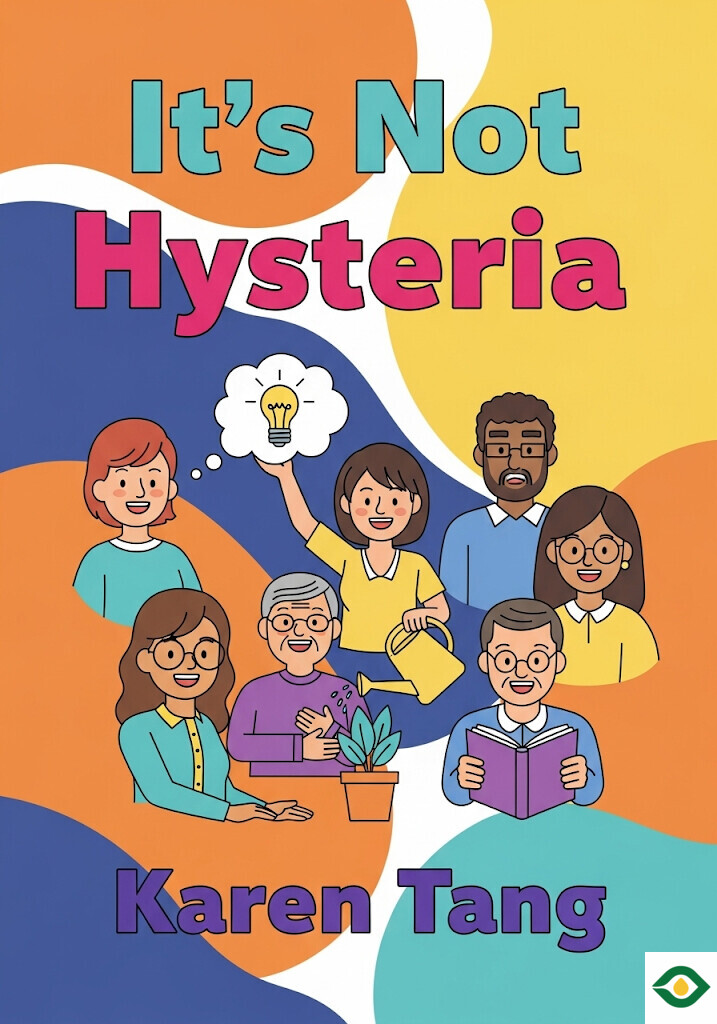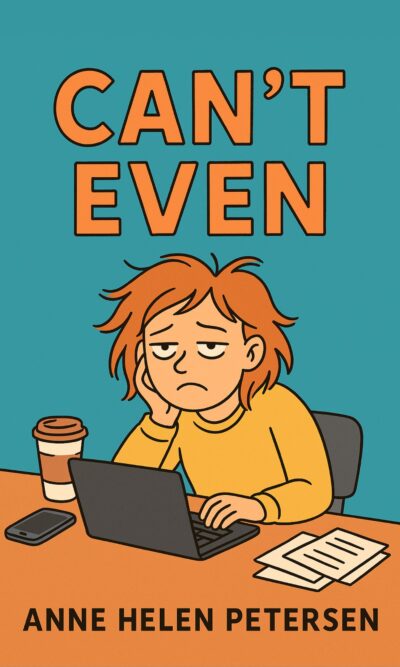Description
Reproductive health is one of the most important aspects of life, yet it is often misunderstood, overlooked, or dismissed. Many people go through years of pain, abnormal symptoms, or emotional stress without receiving the care they need. It’s Not Hysteria shines a light on this reality and offers knowledge, clarity, and encouragement for anyone seeking to take control of their reproductive well-being.
For centuries, women and people with uteruses were told their suffering was imaginary. Doctors used to claim that unexplained pain or emotional struggles were caused by “hysteria,” a so-called illness thought to come from a “wandering womb.” Instead of real medical solutions, people were advised to marry, become pregnant, or accept invasive procedures that often harmed more than helped. At the same time, racism and sexism shaped medical treatment. Enslaved Black women were used for experiments without anesthesia, under the false belief that they felt less pain. These attitudes left deep scars in the history of medicine. Even today, studies show that women’s symptoms are more likely to be dismissed, and Black patients are less likely to receive adequate pain management.
Another major problem is the lack of proper research. Until the 1990s, women were left out of most clinical drug trials, which means doctors today still don’t always know how medications affect female physiology. On top of that, conditions like endometriosis and fibroids—illnesses that impact millions—receive only a fraction of research funding compared to other diseases. The outcome is predictable: women are frequently told their pain is “normal,” offered generic birth control as the only solution, or recommended major surgeries without exploring alternatives.
To truly change this, society needs more funding for reproductive health research, better training for doctors, and equal care for minority populations. But while large-scale reforms are slow, there’s one thing individuals can do right now—educate themselves and become their own strongest advocate.
Understanding your own anatomy is the first step. The reproductive system is remarkable, but many people don’t learn how it really works. The vulva is the external part, including the clitoris, which is much larger internally than most realize. The vagina is a muscular canal leading to the cervix, which connects to the uterus. The uterus itself has an inner lining, the endometrium, which builds up each month and sheds during a period if pregnancy doesn’t occur. Ovaries release eggs and produce essential hormones, while the fallopian tubes carry the egg toward the uterus. The entire cycle is guided by a delicate conversation of hormones between the brain and the reproductive system. Knowing these basics makes it much easier to recognize when something isn’t right.
The next step is learning how to speak with your doctor. Many people hesitate to seek help because they’ve been told painful periods or extreme bleeding are “just part of being a woman.” But if symptoms interfere with your work, school, relationships, or daily activities, they are not normal. Keeping a simple health journal is powerful. Track cycle length, heaviness of bleeding, types of pain, mood changes, or digestive issues. Bring this record to your appointment, and ask for a “problem visit” instead of a quick annual exam. With only a few minutes to talk, being prepared ensures your concerns are clearly heard. Remember—your story is the most important evidence.
Some of the most common gynecological conditions include fibroids, endometriosis, PCOS, and ovarian cysts. Fibroids are growths in the uterine muscle that can cause very heavy periods and sometimes affect fertility. Endometriosis happens when tissue similar to the uterine lining grows outside the uterus, often causing extreme pain and bowel issues. PCOS, a hormonal disorder, can lead to irregular cycles, acne, excess hair, and fertility challenges. Ovarian cysts are usually harmless, but certain ones can twist or rupture, leading to sudden pain. Each of these conditions can feel overwhelming, but with proper diagnosis—through ultrasounds, blood tests, or surgery if needed—treatments exist. The key is awareness and persistence.
Beyond these conditions, reproductive health is shaped by constant hormonal shifts. Menstrual cycles can bring premenstrual syndrome (PMS), which affects up to three-quarters of women, with mood swings, bloating, and fatigue. In more severe cases, PMS can escalate into premenstrual dysphoric disorder (PMDD), which requires medical treatment. Pregnancy introduces another intense wave of hormonal change, with both joys and difficulties, ranging from morning sickness to anxiety. Sadly, miscarriage is common, affecting one in four known pregnancies, and infertility impacts millions worldwide. Later in life, menopause brings challenges like hot flashes, sleep troubles, and bone loss. These transitions can be difficult, but with the right mix of medical support, lifestyle changes, and emotional care, they can be managed.
Reproductive health is also about choices. Contraception offers many possibilities, from hormonal options like the pill, patch, or implant, to non-hormonal choices like copper IUDs and condoms. Emergency contraception is available after unprotected sex, and permanent solutions like sterilization or hysterectomy exist for those certain about not wanting children. Abortion, though heavily debated, remains a common reality—one in four women will experience it in their lifetime. Safe and legal access is critical to protecting health.
At the heart of all these topics lies one essential truth: bodily autonomy. Each individual deserves the right to make decisions about their own health and future. That means having access to accurate information, compassionate care, and the ability to choose the path that feels right for them.
It’s Not Hysteria is more than just a medical guide. It is a call to believe in your own experience, to challenge dismissive attitudes, and to seek out the support you deserve. By breaking the silence, demanding better research, and understanding the incredible complexity of the reproductive system, people everywhere can begin to transform their health journeys.
In the end, knowledge is power. When you learn about your body, you gain confidence. When you track your symptoms, you gain clarity. When you speak up at the doctor’s office, you claim your right to be heard. And when society respects these voices, reproductive health care will finally move forward into a future where everyone receives the dignity, care, and compassion they deserve.





